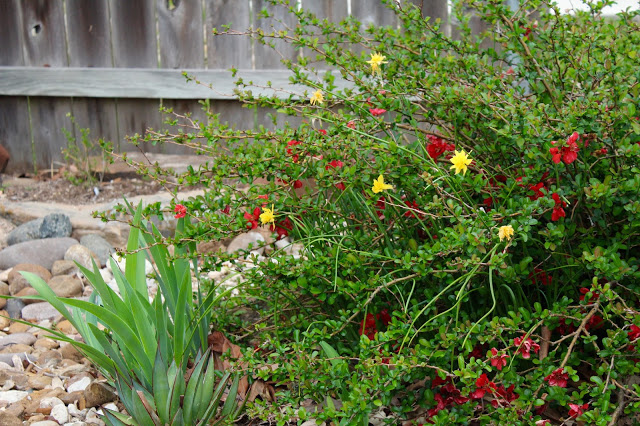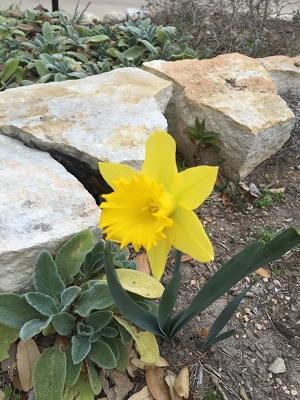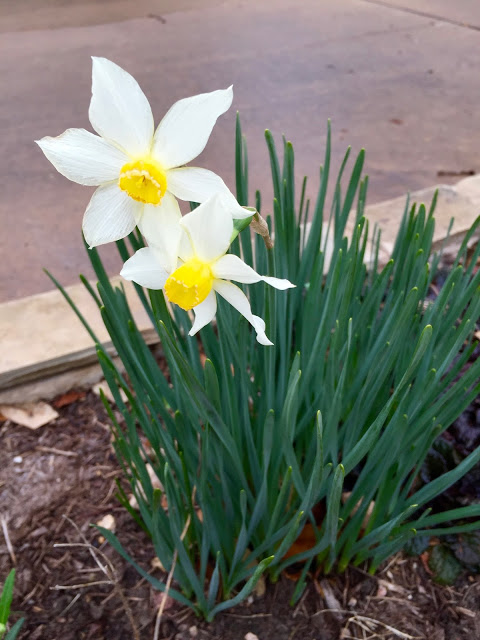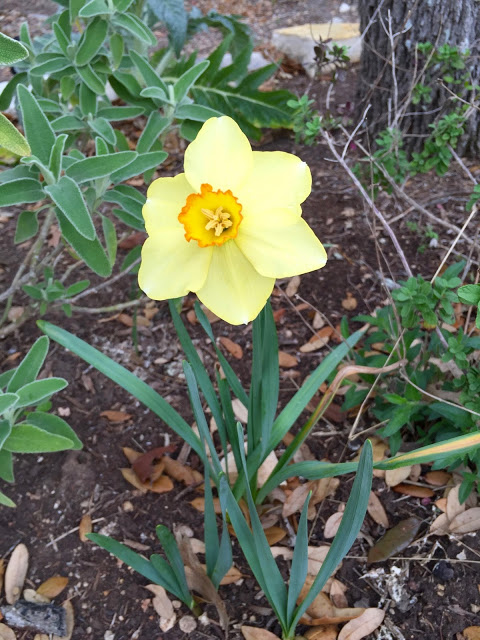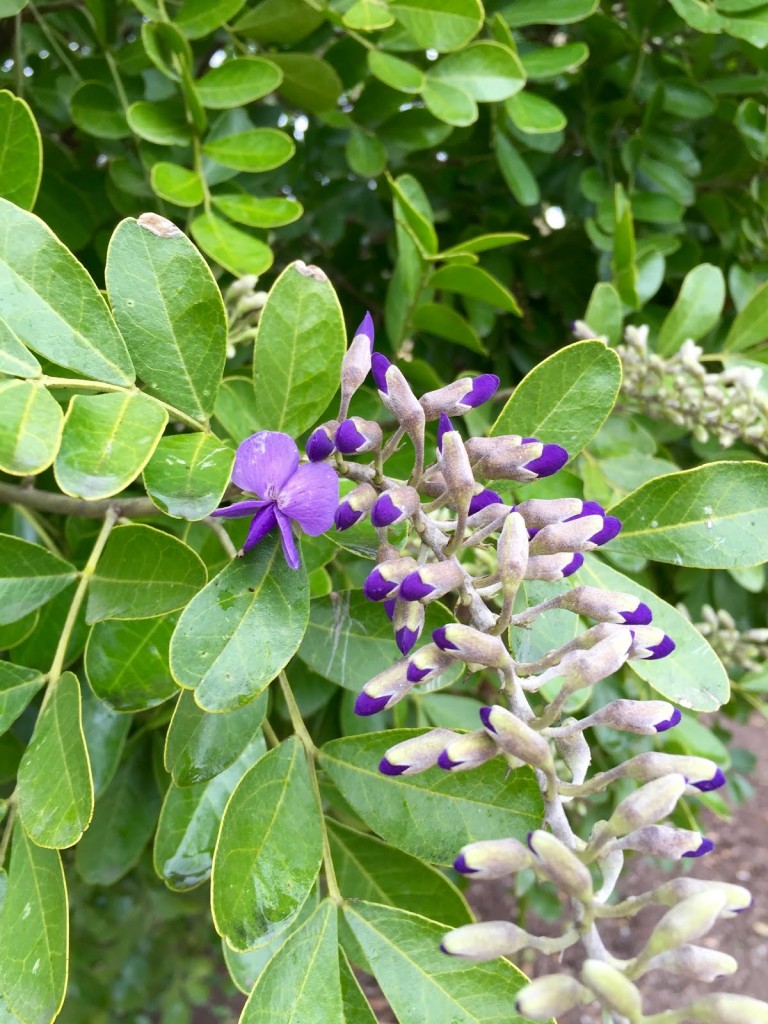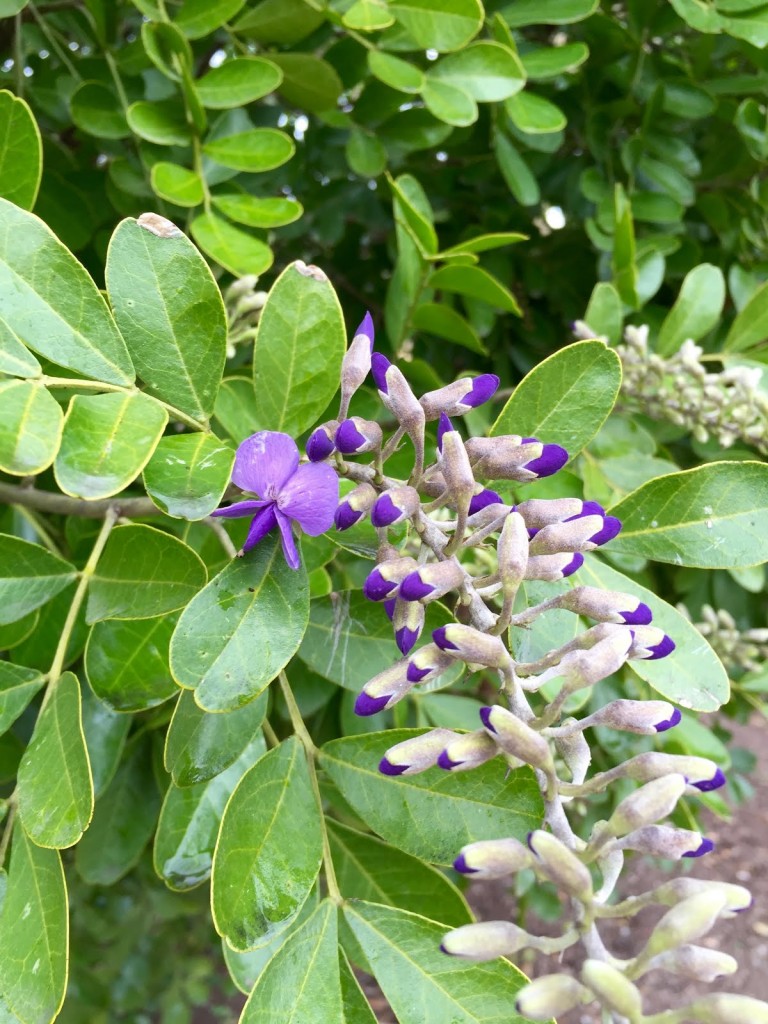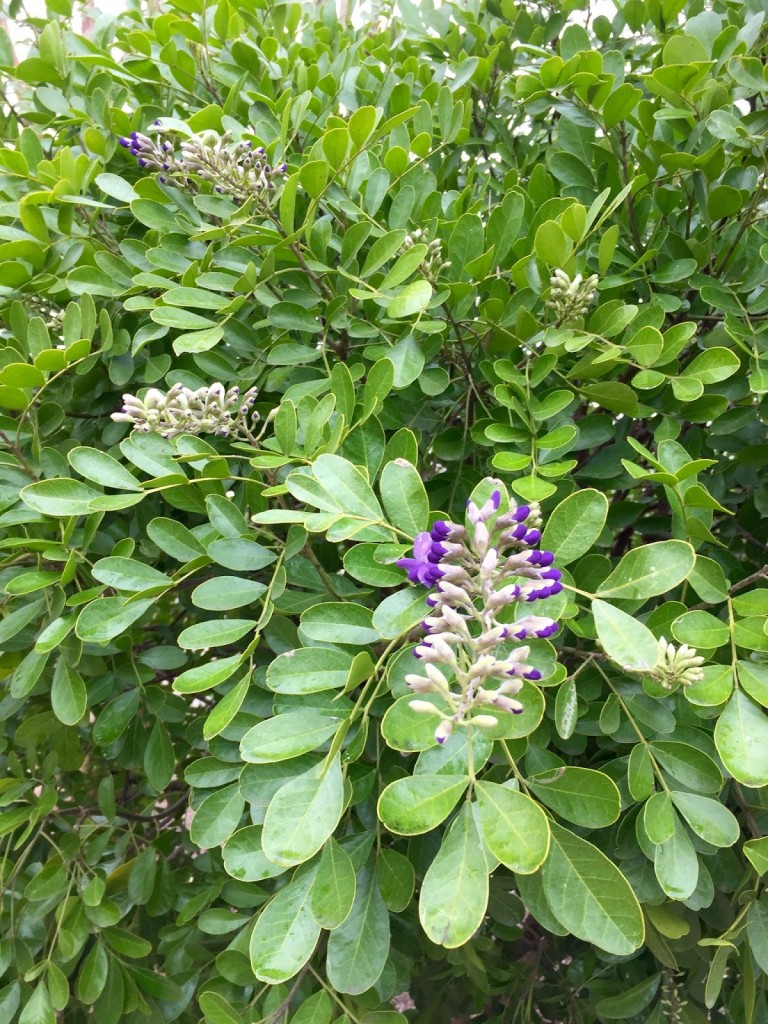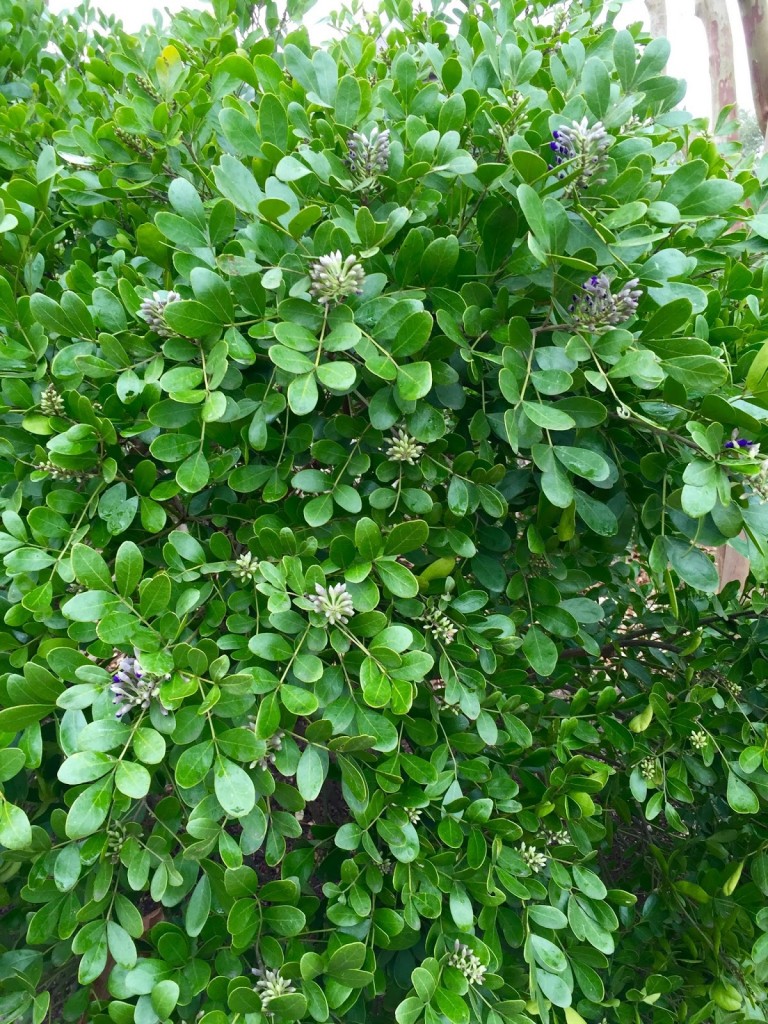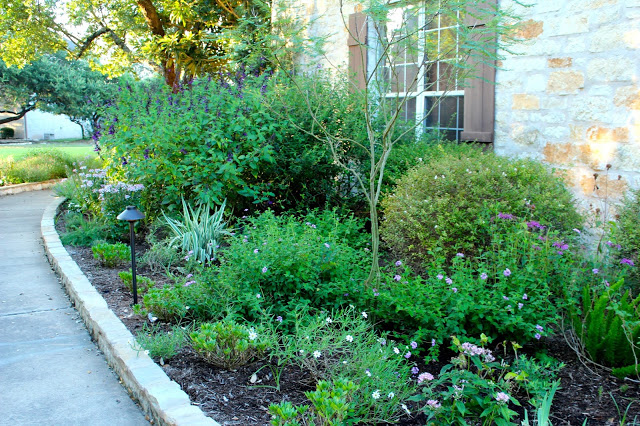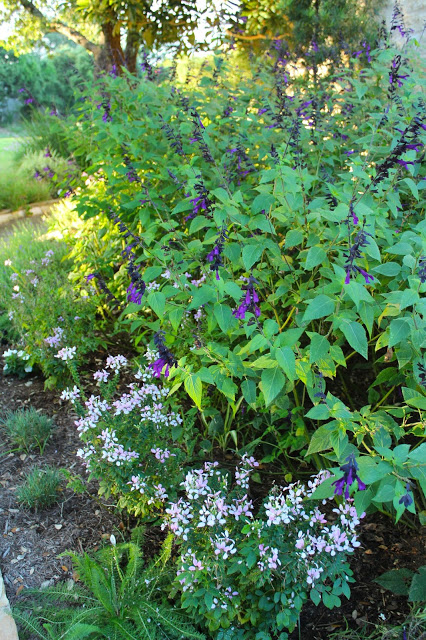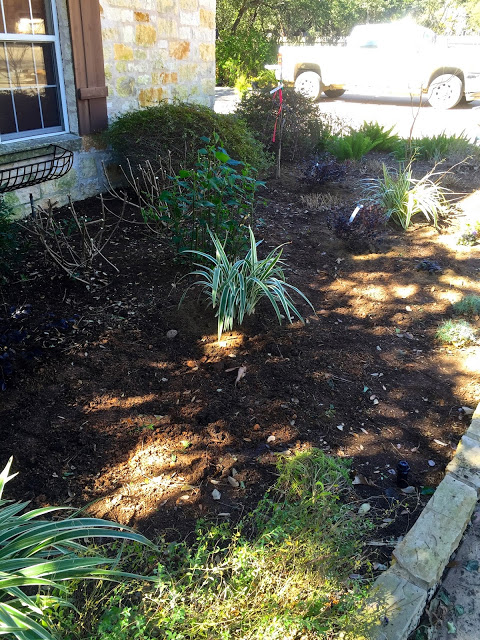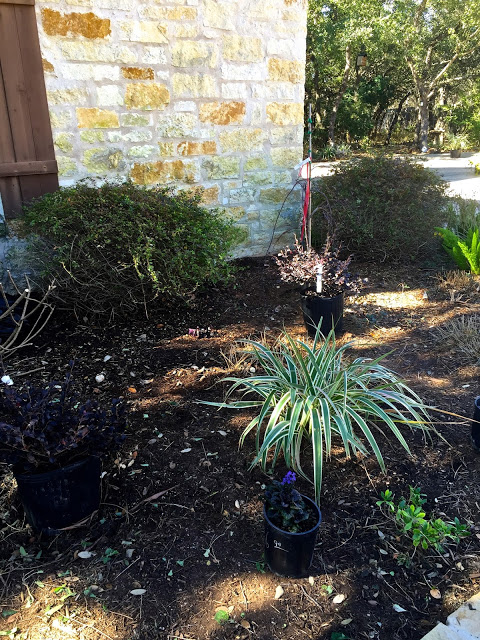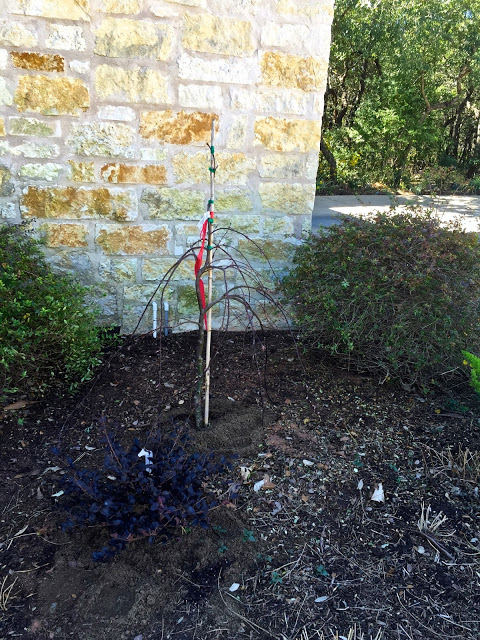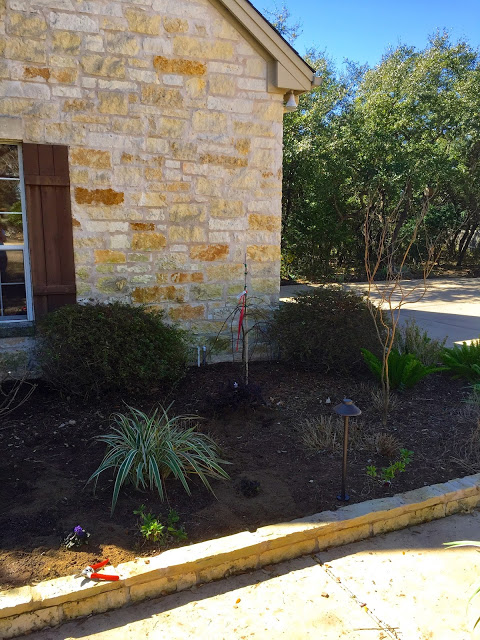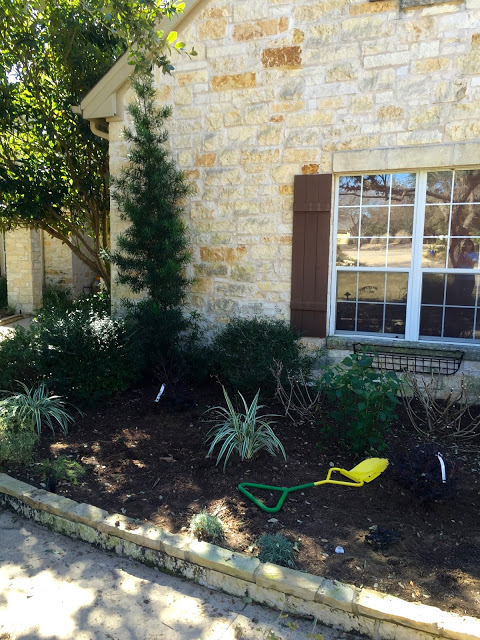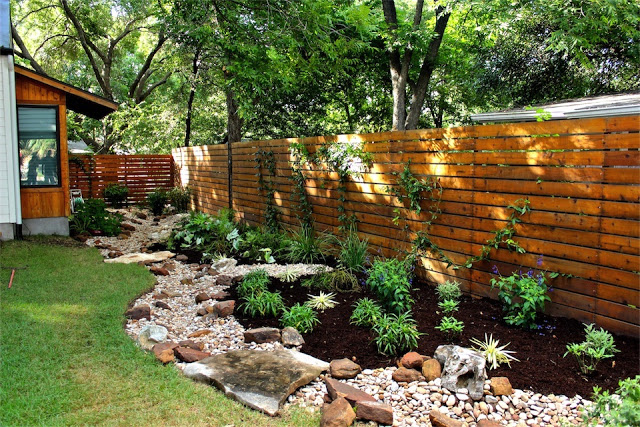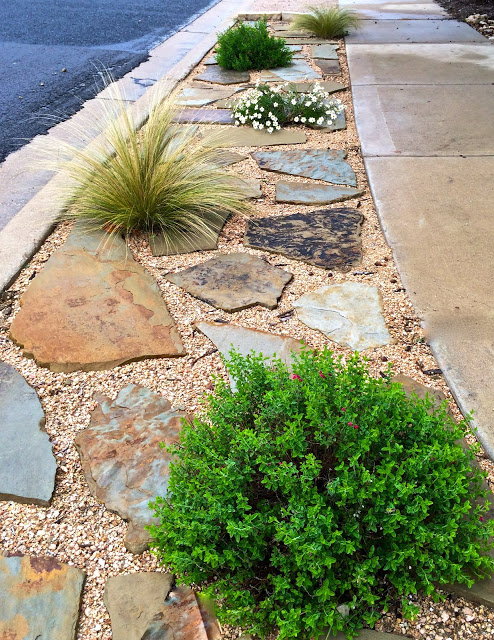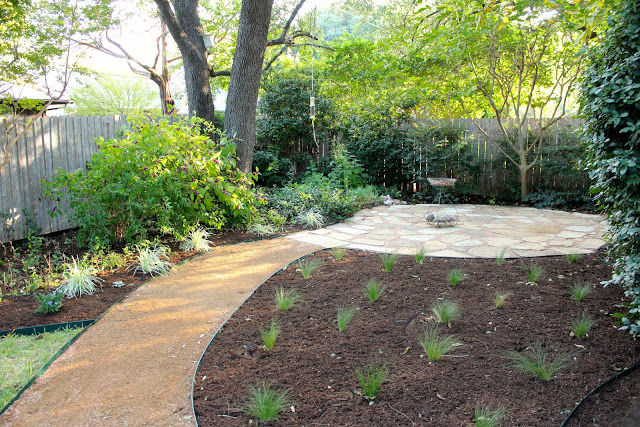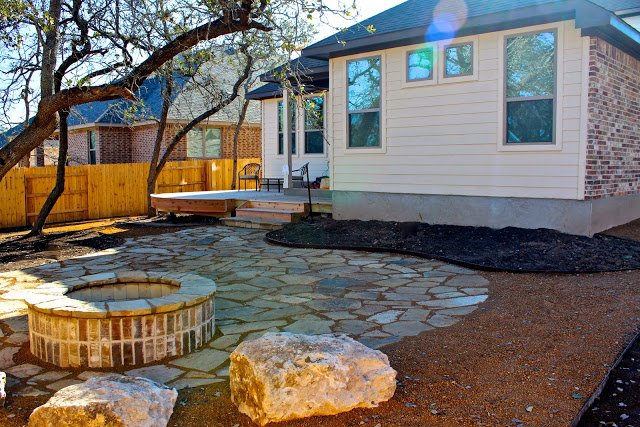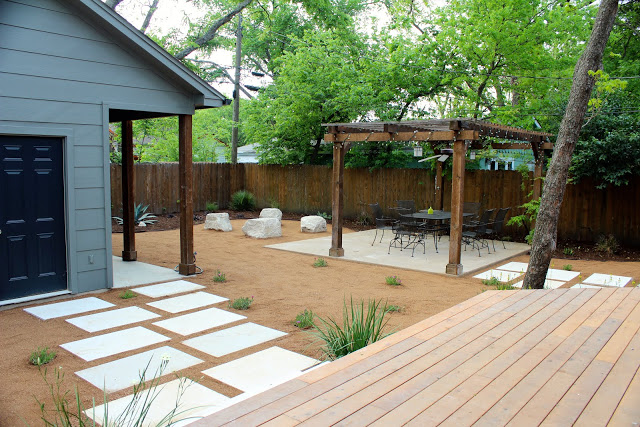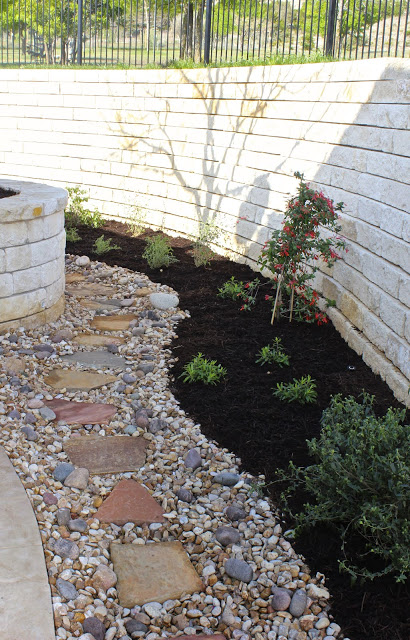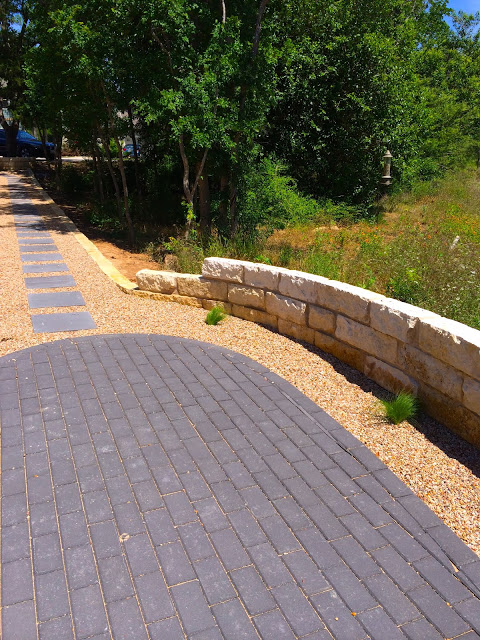Daffodils make the spring garden delightful …
When pressed, I’d say daffodils are my favorite flowers. and now they peek out at me from amongst their close neighbors, the quince flowers.
But then I’d say, though I’m truly in love with Japanese Quince, too. Harbingers of spring, they are both the first blooms to grace my garden each year when the sun starts to warm things up. My quince has grown quite a bit since I first planted these ‘double Campernelle’ daffodils several years ago, and now they peek out at me from amongst their very close neighbors, the quince flowers.
This is the first of the ‘jet fire’ to bloom this year.
I believe this one is called ‘ice follies,’ according to my sales receipt.
I planted several of these last year, and lovingly labeled them. Sadly, the copper labels didn’t hold the Sharpie permanent marker and so now I have to guess which ones went where. I can’t seem to figure out which one this is. Any ideas?
I just had to have these glass flowers when I saw them at the store. Now I have daffs in my garden year-round!
These are the ‘double campernelle’ that are so frilly. They are heirlooms and date back to the 1600s.
Finally, the sweet, short daffodils, Tete-a-tetes, that make perky little clusters all through my garden.
I should have blown away the piles of oak leaves surrounding them, but you’re seeing them as they are in the garden naturally, warts and all!

